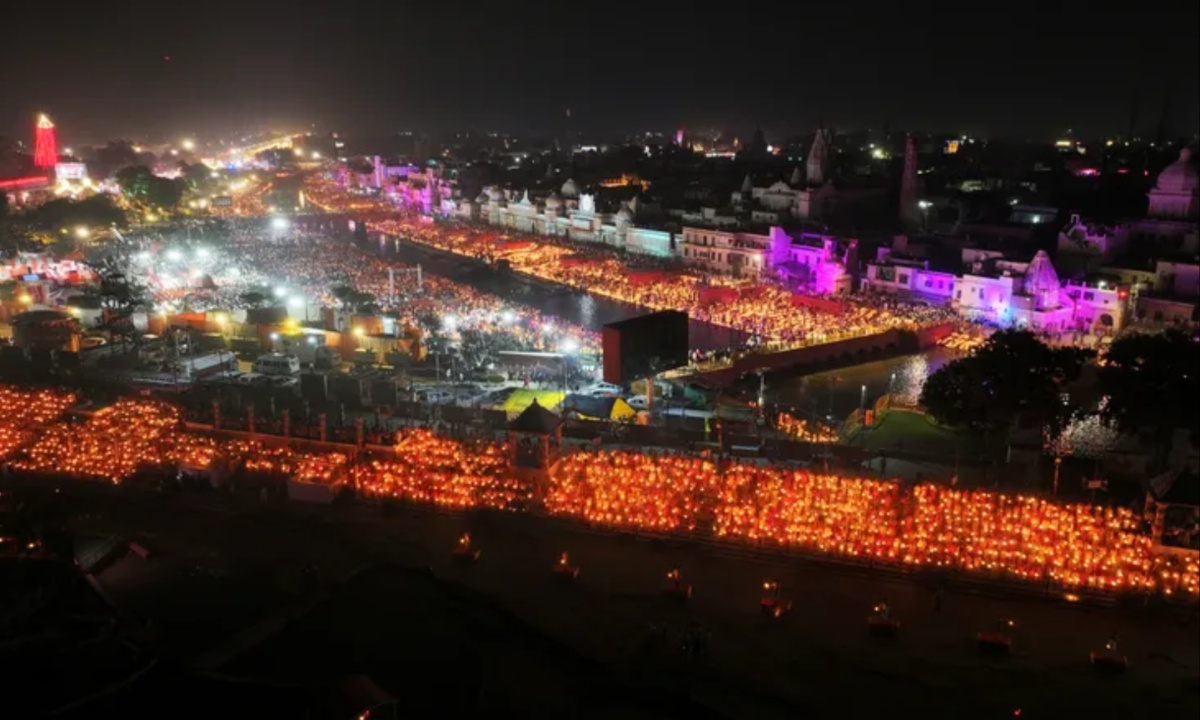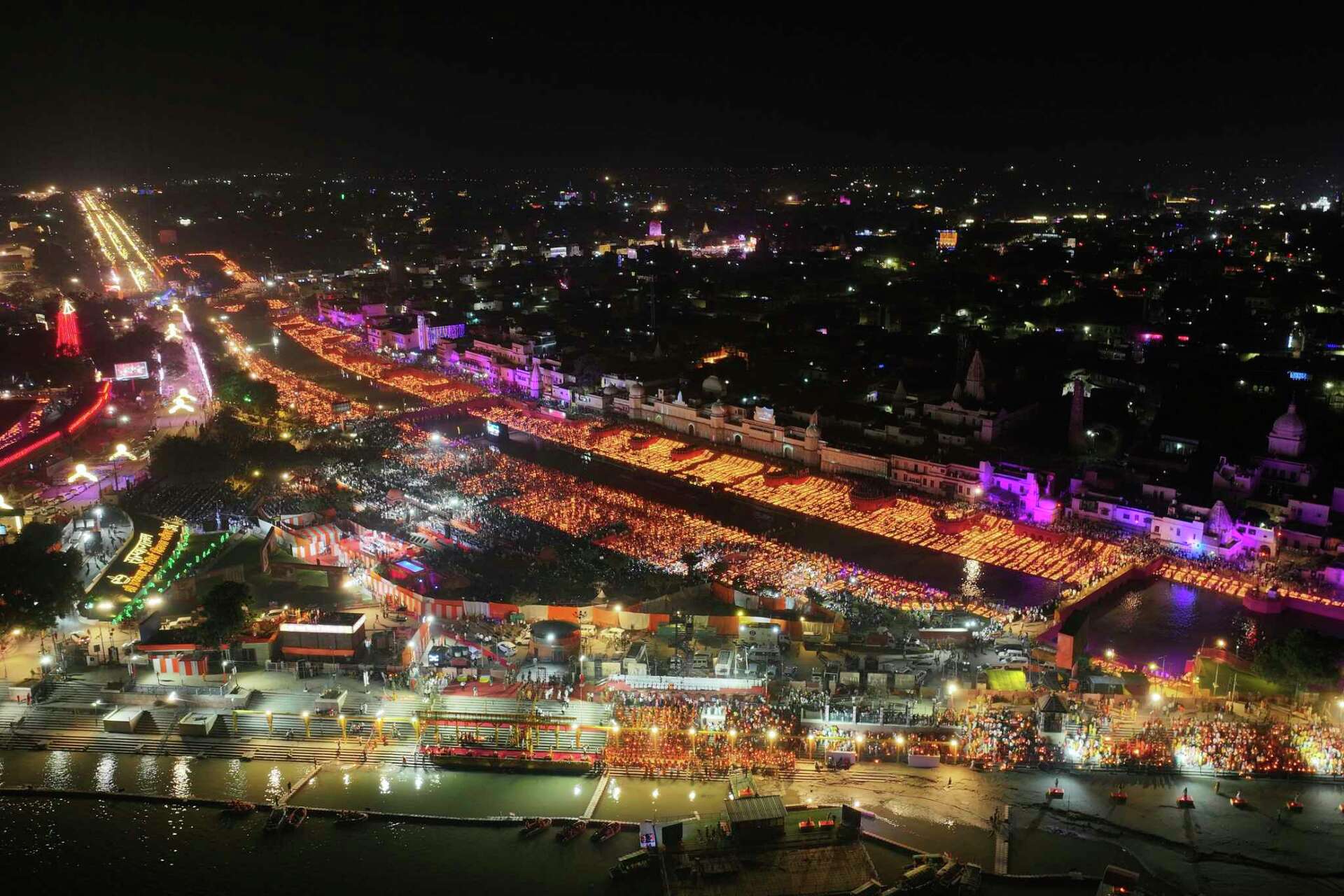The annual Hindu festival of lights, Diwali, was celebrated by millions of Indians who gathered in Ayodhya to light a record 2.51 million earthen oil lamps on the banks of the Saryu River. This event occurred at dusk on Wednesday and is particularly significant as Ayodhya is believed to be the birthplace of Lord Ram, a key figure in Hindu mythology.
Diwali holds great importance for the Hindu majority in India and is marked by festivities that include social gatherings, gift exchanges, and the lighting of lamps, candles, and fireworks, along with prayers to the goddess Lakshmi for luck and prosperity.
The achievement of lighting 2.51 million lamps received official recognition from Guinness World Records, with Uttar Pradesh Chief Minister Yogi Adityanath presenting the certificate. This surpassed last year’s record of 2.2 million lamps and showcased the scale and enthusiasm of the celebrations.
Drones monitored the event closely, ensuring that the record-setting process adhered to guidelines and standards. The massive participation of millions highlights the deep cultural significance of Diwali in Indian society.

Ayodhya Shines with 2.51 Million Lamps for Record-Breaking Diwali Celebration Along Saryu River
Ayodhya is steeped in historical and political context, especially following Prime Minister Narendra Modi’s inauguration of a new Hindu temple built on the ruins of a historic mosque earlier this year. This temple, dedicated to Lord Ram, represents a long-awaited aspiration for many Hindus, intertwining the festival’s celebrations with broader socio-political themes. The lighting of lamps symbolizes community pride and religious devotion in this historically significant location.
Organizing the event required extensive coordination, with over 30,000 volunteers, primarily college students, involved in the effort. Dr. Pratibha Goyal, vice-chancellor of Dr. Ram Manohar Lohia Avadh University, oversaw the initiative, ensuring that the lamps were systematically lit along the riverfront. This spectacular display extended over 1.5 kilometers and contributed to Ayodhya achieving its seventh consecutive world record for the largest oil lamp display, a testament to the dedication of those involved.
The atmosphere in Ayodhya transformed into a city of lights, complemented by devotional singing, a laser show depicting scenes from the Ramayana, and an eco-friendly fireworks display. Traditional decorations enhanced the festive mood, drawing pilgrims and visitors to the streets for cultural performances.
Additionally, a grand prayer ceremony involving 1,100 priests took place along the riverbanks. To ensure public safety during the large-scale event, heightened security measures were implemented, including the use of paramilitary commandos and drones for real-time surveillance, underscoring the significance of this monumental celebration.











































